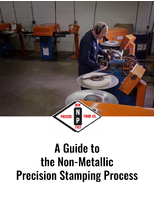Metalworking Hazards Pose Occupational Health Risk without Proper Equipment
Posted on July 20, 2015 by Leonard Roulier in Air Quality, Energy Efficiency, Exhaust Systems vs Filtration, Filtering Options, Fume Extraction, Laboratory, Manufacturing, Optimization, Portable Systems, Small Businesses, Worker Protection
The metalworking industry is no stranger to potential health risks since grinding, polishing, buffering and other similar processes all produce airborne dusts. Some of these processes can cause chromium dust from working with stainless steel metals.
These metalworking processes have been linked to numerous respiratory and neurological diseases when workers are not protected with proper engineering controls, such as fume extractors or air purifications systems. To add to these hazards, there are several contaminants created from metal grinding because of the coatings on the alloys. These abrasive materials come from welding preparation and dressing, sand casting and other post-processing methods to remove rust or paint from metal surfaces.
Metalworking fluids also pose risks for workers
Not only are metalworkers privy to dust contaminants from metal grinding and polishing processes, but these industrial crews are also exposed to metalworking fluids (MWF). According to the U.S. Centers for Disease Control and Prevention, roughly 1 million employees are exposed to MWFs and more than 100 million gallons of MWFs are generated each year.
MWFs are used to lubricate, cool and limit corrosion on tool parts and bits during grinding, drilling, boring and cutting processes, the CDC stated. Some of the MWFs include semisynthetic oils, synthetic oils, straight oils and soluble oils. The problem is many workers can breathe in these different types of fluids from splashing or from inhaling the metal particles in the air during equipment operation.
Some of the immediate health effects deal with skin irritation, rashes, acne, severe coughing, asthma and throat, nose and eye irritation. According to the National Institute for Occupational Safety and Health (NIOSH), the recommended exposure limitation for MWFs is 0.4 milligrams per cubic meter for 10 hours a day through a 40-hour work week.
Metalworking facilities need proper ventilation
In a 2007 NIOSH Health Hazard Evaluation Report on a metalworking firm using MWFs, the agency discovered the machines lacked local exhaust and ventilation systems to help reduce some of the airborne contaminants that were present from the metalworking.
"Most machines were covered in oil and grime; some had dirty oil at their base," the NIOSH report stated. "A variety of work practices were observed; some employees used their bare hands when changing out oil covered parts (cleaning their hands with cotton rags they reused throughout the day, or using throw-away paper towels) while others wore latex or nitrile gloves."
Direct contact with these fluids is another major risk for metalworkers as the particles can harm operators' skin. Every metalworking facility in the U.S. should follow proper NIOSH guidelines and industrial hygiene practices to ensure employees are safe from occupational hazards.
Another solution to this health issue is to invest in oil mist collector equipment that can help remove airborne contaminants and cultivate much safer work areas. Without the proper mist collection equipment, facilities are at risk of being shut down due to noncompliance with federal work safety regulations or through the high costs of covering a worker's compensation claim.




